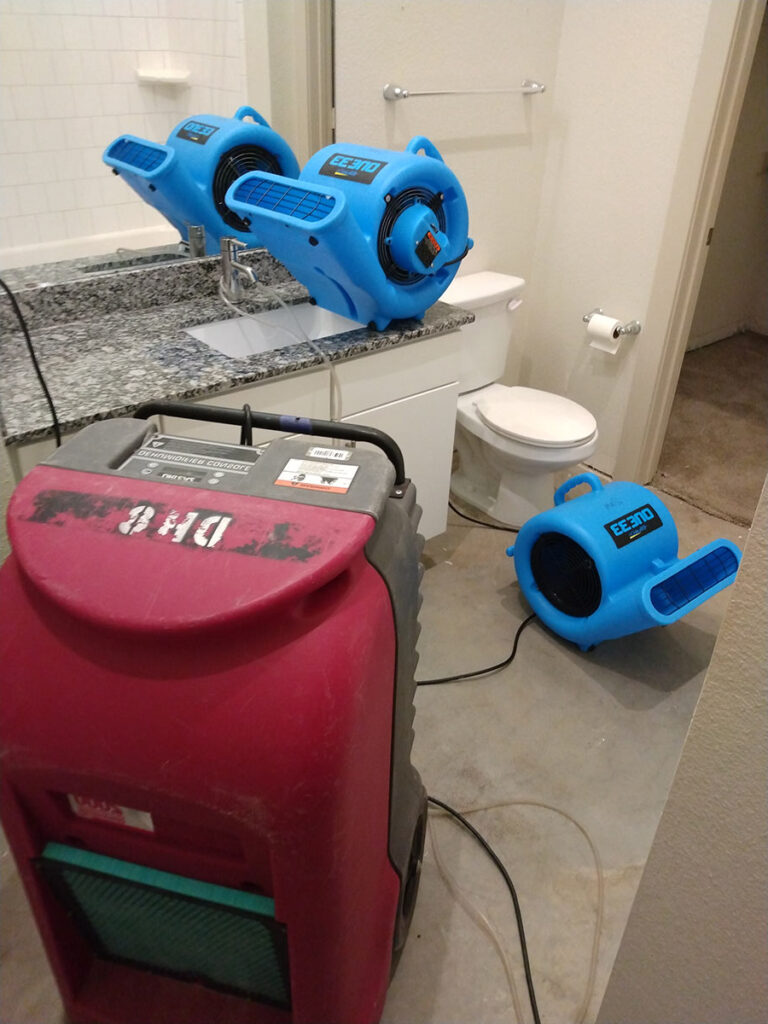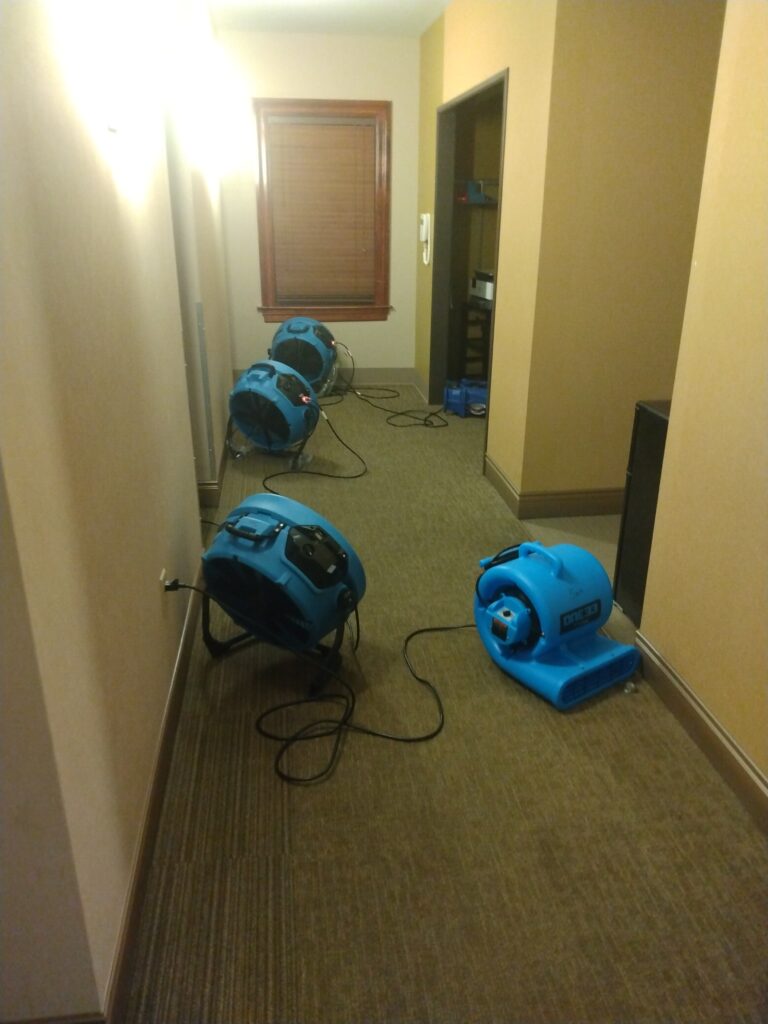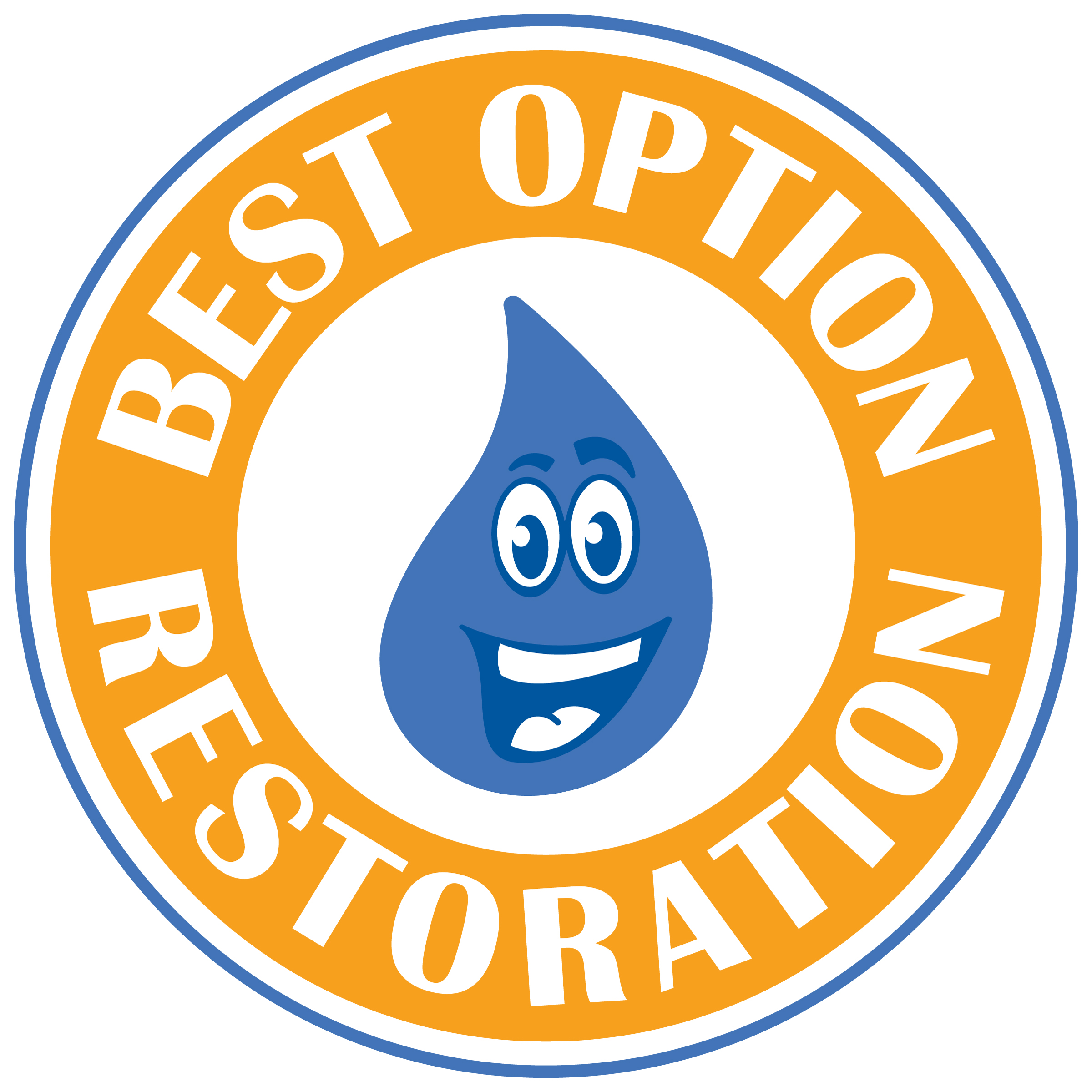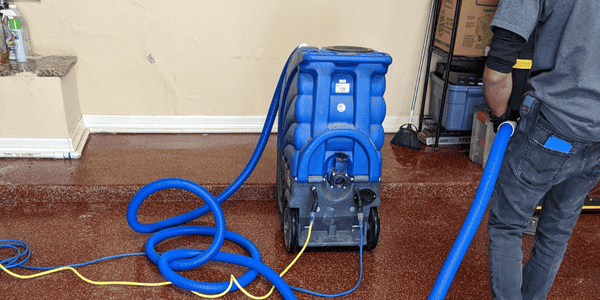Few situations are as stressful as waking up to find your home or business flooded. Whether caused by a burst pipe, heavy rainfall, or unexpected appliance failure, water damage can wreak havoc on your property in mere minutes. Left unchecked, excess moisture can lead to mold growth, structural deterioration, and health hazards, making fast action essential.
If you’re dealing with water damage in Austin or anywhere in Travis County, knowing the right steps can mean the difference between a quick recovery and costly, long-term damage. This guide will walk you through the necessary actions for emergency water damage removal in Travis County, helping you regain control of the situation quickly and efficiently.
Why Quick Action Is Crucial After Water Damage

Water damage gets worse by the minute. The longer water sits, the more complications arise, threatening both your property and your health. Here’s what happens when water isn’t removed immediately:
The Water Damage Timeline
- Within Minutes: Water spreads rapidly, seeping into floors, walls, carpets, and furniture.
- Within Hours: Wooden surfaces swell, drywall absorbs moisture, and carpets become soggy.
- After 24 Hours: Mold begins to grow, affecting indoor air quality and making restoration more difficult.
- After 48 Hours or More: Structural components weaken, odors develop, and restoration costs increase significantly.
By acting immediately and calling professional emergency water removal services, you can prevent small issues from becoming major disasters.
Step 1: Prioritize Safety and Assess the Damage
Before taking any action, ensure your safety and the safety of everyone on the property. Water damage can create hazardous conditions, including electrical shock risks, structural instability, and contamination.
How to Assess Water Damage Risks
- Identify the water source: If the flooding is due to a plumbing failure, shut off the water supply immediately.
- Check for electrical hazards: If water has reached electrical outlets or appliances, do NOT touch anything. Turn off power at the breaker if possible.
- Determine water contamination levels:
- Category 1: Clean Water – Comes from pipes or appliances and poses minimal risk.
- Category 2: Gray Water – Comes from washing machines, dishwashers, or bathrooms and contains contaminants.
- Category 3: Black Water – Comes from sewage backups, flooding, or stagnant water and is highly hazardous.
If the water damage is extensive, evacuate the property and call the experts in emergency water damage removal in Travis County for immediate assistance.
Step 2: Stop Water from Spreading
The faster you contain the damage, the easier and cheaper the restoration process will be. Take the following immediate steps to limit the spread of water damage:
Block water from spreading: Use towels, mops, or sandbags to stop water from reaching unaffected areas.
Move valuables to a dry area: Relocate furniture, electronics, important documents, and artwork.
Lift furniture: Place aluminum foil or wooden blocks under furniture legs to prevent further water absorption.
Remove excess water: Use a wet/dry vacuum or towels to extract as much water as possible.
If water is still actively leaking, turn off the water supply and call a plumber immediately.
Step 3: Document the Damage for Insurance Claims
Filing an insurance claim can be stressful, but proper documentation will make the process much easier. Most homeowner’s insurance policies cover sudden water damage, but not flood damage, so it’s crucial to keep records of everything.
How to Document Water Damage for Insurance
- Take clear photos and videos of the affected areas, including floors, walls, furniture, and appliances.
- Keep damaged belongings until they are inspected by your insurance adjuster.
- Make a detailed inventory of damaged items, including estimated values.
- Save receipts for any emergency repairs or temporary lodging if you must vacate the property.
Having thorough records will help maximize your reimbursement and speed up the claims process.
Step 4: Start the Water Removal and Drying Process

Once documentation is complete, begin the drying process immediately to prevent mold and further damage.
DIY Water Removal (For Minor Damage)
-Use a wet/dry vacuum to extract standing water from floors and carpets.
–Set up fans and dehumidifiers to increase air circulation and speed up drying.
–Open windows and doors to allow fresh air to flow through the property.
–Pull up waterlogged carpets and rugs to prevent mold growth.
When to Call Professionals
If water has seeped into walls, ceilings, insulation, or structural components, DIY drying is NOT enough. Professional-grade drying and dehumidification equipment is required to prevent hidden moisture pockets that could lead to mold infestations and wood rot.
Step 5: Call Professional Emergency Water Damage Removal in Travis County
For extensive water damage, hiring a professional restoration company can save your property and reduce long-term costs.
Why Choose Best Option Restoration of Travis County?
-24/7 Emergency Services – Rapid response to minimize damage.
–Certified & Experienced Technicians – Our team is IICRC-certified and highly trained.
–Advanced Equipment – Industrial-grade water extractors, dehumidifiers, and moisture meters ensure a thorough dry-out process.
–Insurance Assistance – We work directly with your insurance provider to make the claims process hassle-free.
Need Help Now? Call Best Option Restoration for Emergency Water Damage Removal in Travis County!
Step 6: Prevent Mold Growth & Long-Term Complications
Mold can start growing within 24 to 48 hours after water exposure, leading to serious health risks and expensive remediation.
How to Prevent Mold After Water Damage
–Ensure complete drying with professional dehumidifiers and moisture detection.
–Apply anti-microbial treatments to prevent mold and bacterial growth.
–Inspect hidden areas, such as behind walls, under flooring, and inside air ducts.
–Schedule a professional mold inspection if you suspect lingering moisture.
If mold is already present, contact experts for professional mold remediation before it spreads further.
The Cost of Waiting: Why Fast Action Matters
Delaying action after water damage can cause:
-Severe Structural Damage – Water weakens wood, drywall, and even foundations.
–Mold Infestations – Exposure to mold can cause allergies, respiratory issues, and costly removal expenses.
–Skyrocketing Restoration Costs – The longer you wait, the worse (and more expensive) the damage becomes.
Need Immediate Help? Contact Best Option Restoration of Travis County
Time is everything when dealing with water damage. If you need emergency water damage removal in Travis County, flood cleanup, or mold prevention, our experts at Best Option Restoration are here to help.
Our Comprehensive Water Damage Services
Emergency Water Removal – Available 24/7 for immediate response.
Flood Cleanup – Extensive cleaning and restoration after severe flooding.
Fire & Smoke Damage Restoration – Water and smoke damage cleanup following a fire.
Mold Remediation – Safe and effective mold removal services.
Storm Damage Repair – Restoration support after severe Texas storms.
We proudly serve Austin and the entire Travis County region.
Call us now for fast, expert water damage restoration!


